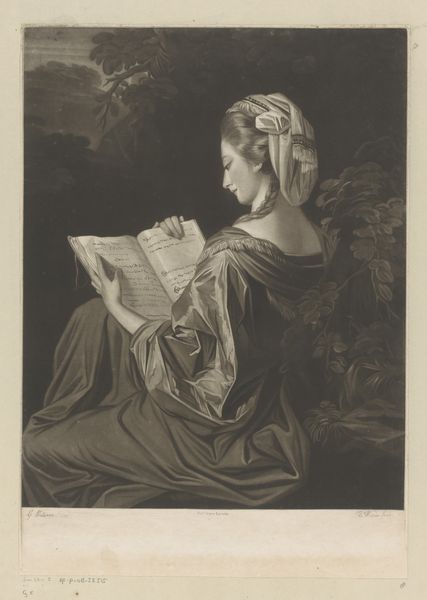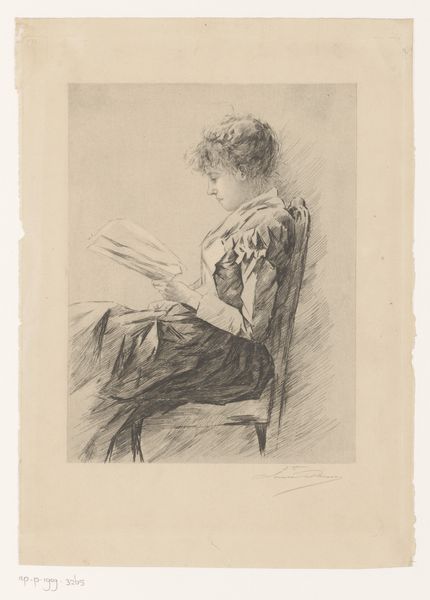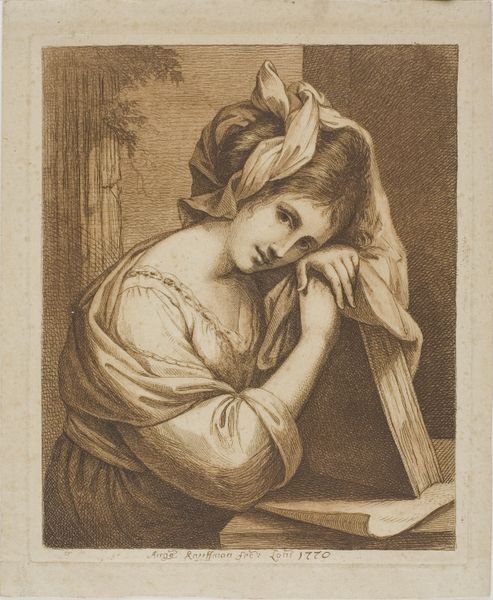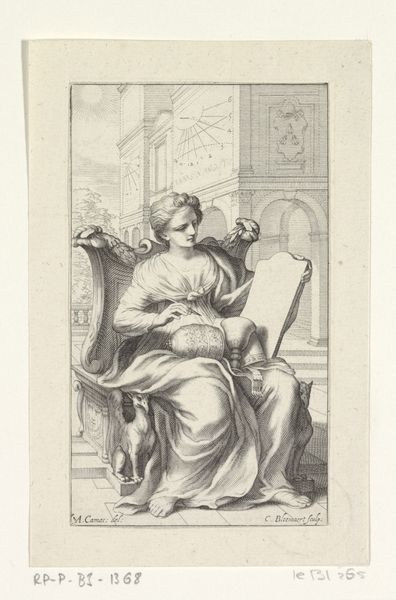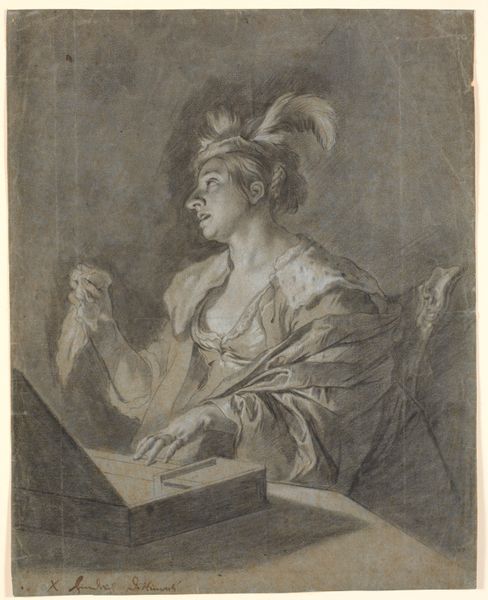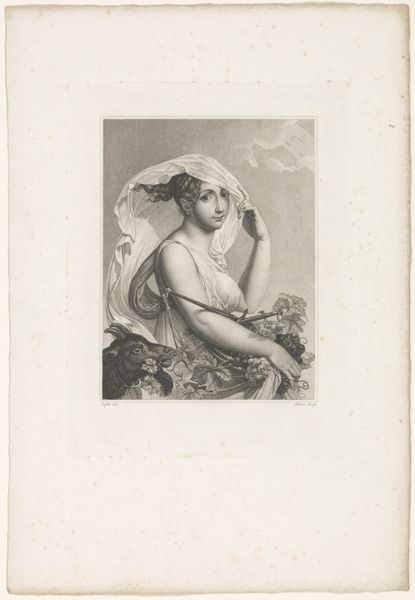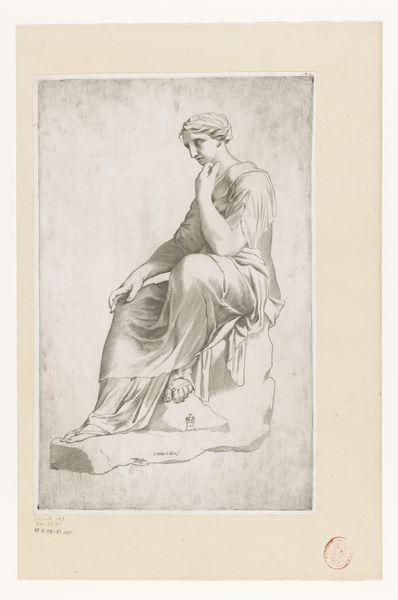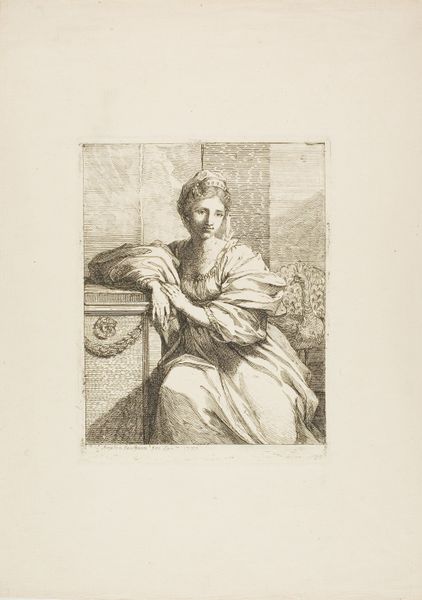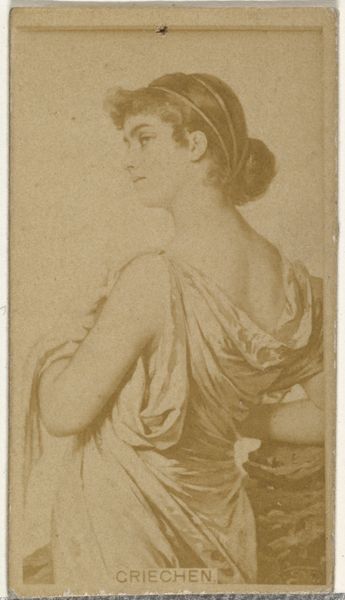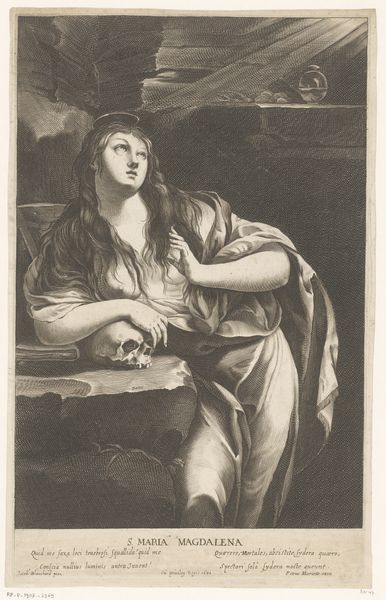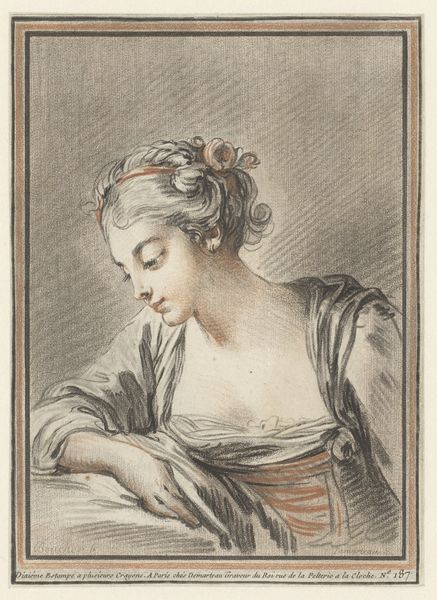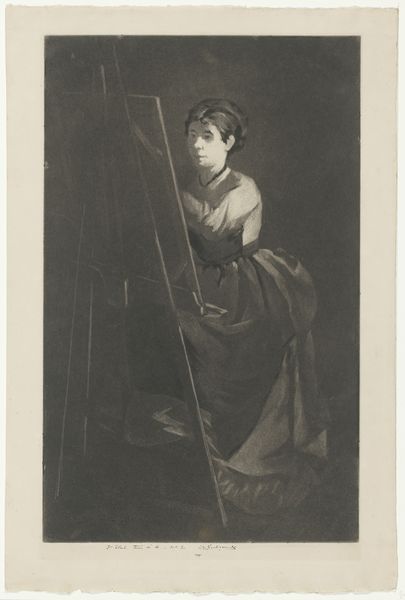
drawing, print, engraving
#
portrait
#
drawing
#
neoclacissism
# print
#
old engraving style
#
portrait reference
#
line
#
history-painting
#
engraving
Dimensions: Plate: 13 3/4 × 9 3/4 in. (34.9 × 24.8 cm) Sheet: 14 in. × 10 1/16 in. (35.5 × 25.5 cm)
Copyright: Public Domain
Curator: Let's turn our attention to "The Tiburtine Sibyl," an engraving dating from around 1785-1795, now residing at the Metropolitan Museum. The artist identified as Girolamo Carattoni, captures a fascinating figure. Editor: There's a calmness to her, a quiet intensity. The light and shadow play beautifully on her face, even in this monochrome print. I imagine her lost in thought, communing with visions we can't see. Curator: Precisely. Consider the artist's expert manipulation of line—observe the cross-hatching used to render the drapery and turban. The Sibyl's gaze is direct, commanding the viewer's attention within the two-dimensional space. Semiotically, she represents knowledge, prophecy...power. Editor: Yes, and it's such a controlled kind of power. Almost domestic? She’s got this giant turban on, but her expression feels rather intimate. Like she's pausing from writing a very important to-do list and looking right at us. You almost expect her to roll her eyes in that maternal, knowing way. Curator: Note the neoclassicist influence – the smooth lines, the focus on a historical or mythological figure. The composition centers on balanced forms. This work uses classical idealism and geometric order as central tenets to inspire feelings of grandeur, and civic duty. Editor: Well, civic duty is putting it mildly! Sibyls were known for prophecy! And though the formal approach leans into precision and detail, one could argue the artist infuses this "Tiburtine Sibyl" with a hint of mystery...or at least a kind of everyday knowing. She may well know secrets but looks like she could be telling off a misbehaving child at the same time. Curator: Your emphasis on mystery is noted, but I find the technique used by Carattoni—a meticulous and precise rendering—grounds any temptation to overly romanticize this sibyl, placing it squarely within the Age of Enlightenment and neoclassicism's emphasis on reason and clarity. Editor: But maybe she’s predicting the Age of Enlightenment, or at least what everyone's been googling lately! To me the work exists as a beautiful dance of the objective and a feeling that lingers. Curator: Indeed, and in that balance the image's true dynamism exists.
Comments
No comments
Be the first to comment and join the conversation on the ultimate creative platform.
